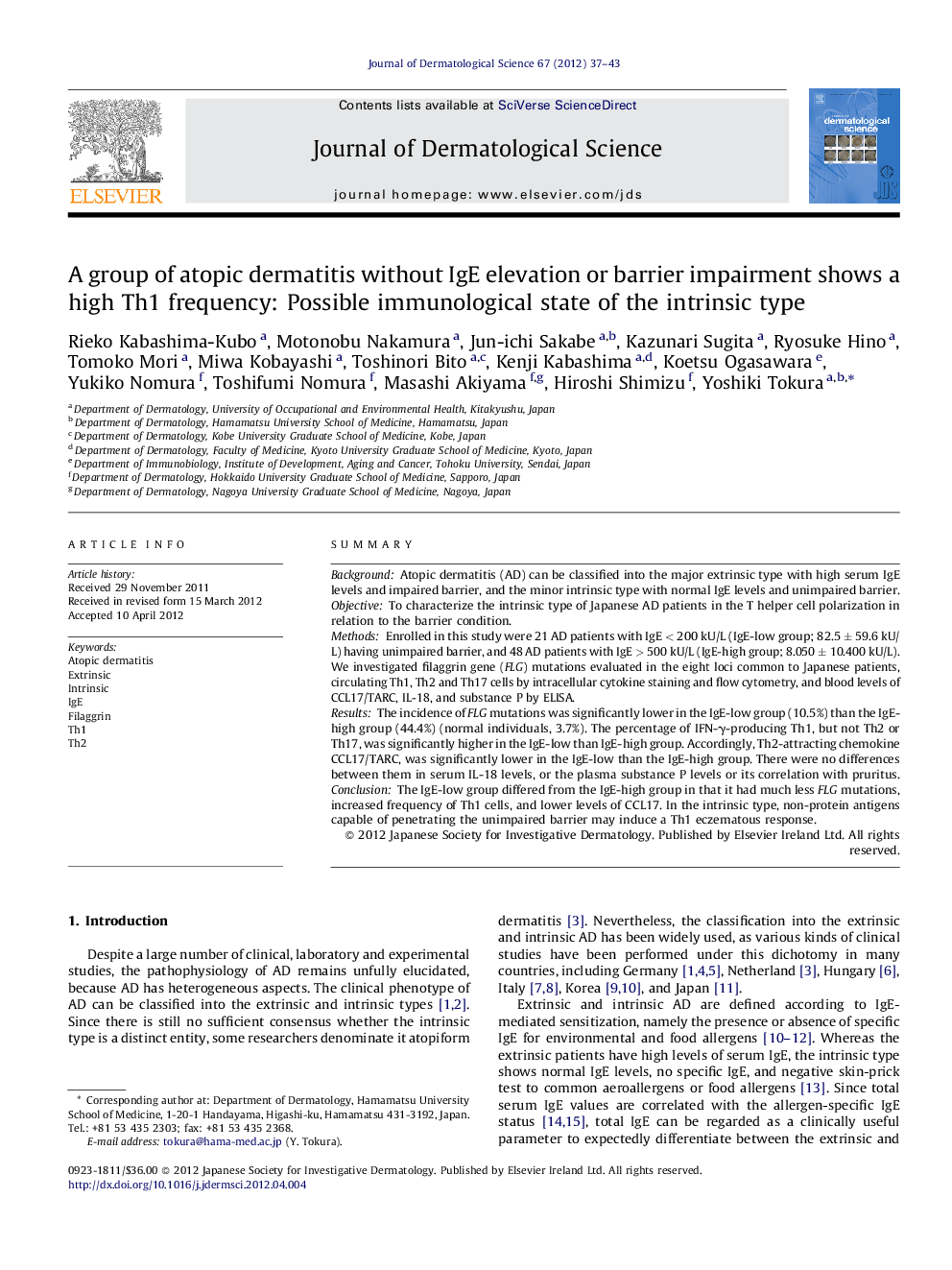| Article ID | Journal | Published Year | Pages | File Type |
|---|---|---|---|---|
| 3213087 | Journal of Dermatological Science | 2012 | 7 Pages |
SummaryBackgroundAtopic dermatitis (AD) can be classified into the major extrinsic type with high serum IgE levels and impaired barrier, and the minor intrinsic type with normal IgE levels and unimpaired barrier.ObjectiveTo characterize the intrinsic type of Japanese AD patients in the T helper cell polarization in relation to the barrier condition.MethodsEnrolled in this study were 21 AD patients with IgE < 200 kU/L (IgE-low group; 82.5 ± 59.6 kU/L) having unimpaired barrier, and 48 AD patients with IgE > 500 kU/L (IgE-high group; 8.050 ± 10.400 kU/L). We investigated filaggrin gene (FLG) mutations evaluated in the eight loci common to Japanese patients, circulating Th1, Th2 and Th17 cells by intracellular cytokine staining and flow cytometry, and blood levels of CCL17/TARC, IL-18, and substance P by ELISA.ResultsThe incidence of FLG mutations was significantly lower in the IgE-low group (10.5%) than the IgE-high group (44.4%) (normal individuals, 3.7%). The percentage of IFN-γ-producing Th1, but not Th2 or Th17, was significantly higher in the IgE-low than IgE-high group. Accordingly, Th2-attracting chemokine CCL17/TARC, was significantly lower in the IgE-low than the IgE-high group. There were no differences between them in serum IL-18 levels, or the plasma substance P levels or its correlation with pruritus.ConclusionThe IgE-low group differed from the IgE-high group in that it had much less FLG mutations, increased frequency of Th1 cells, and lower levels of CCL17. In the intrinsic type, non-protein antigens capable of penetrating the unimpaired barrier may induce a Th1 eczematous response.
